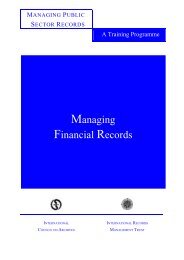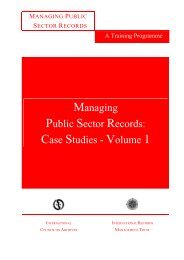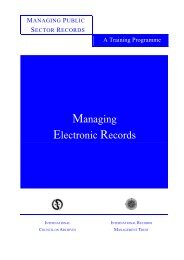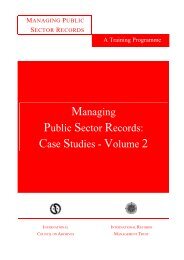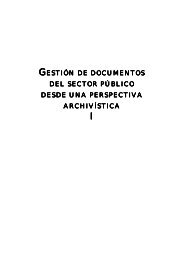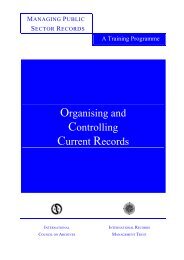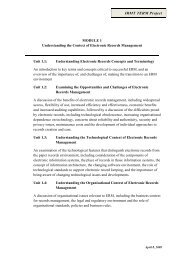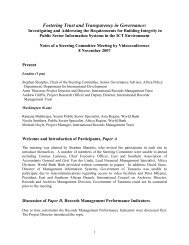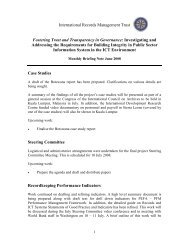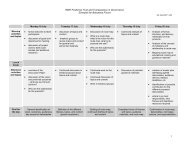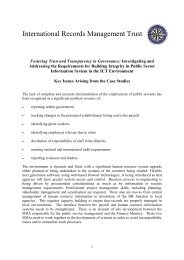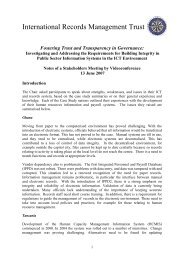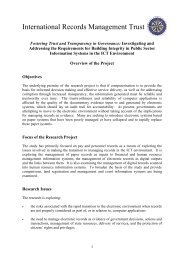Managing Personnel Records - International Records Management ...
Managing Personnel Records - International Records Management ...
Managing Personnel Records - International Records Management ...
You also want an ePaper? Increase the reach of your titles
YUMPU automatically turns print PDFs into web optimized ePapers that Google loves.
See Restructuring Current <strong>Records</strong> Systems: A<br />
Procedures Manual for information gathering<br />
methodologies.<br />
It is also important to identify the organisation’s policy objectives for personnel<br />
management before determining a plan of action. There are likely to be policy<br />
statements and planning documents on the government’s objectives for the civil<br />
service as well as policy documents specifically on personnel issues. The business<br />
plan, where it exists, usually has implications for the management of personnel, and<br />
this in turn has implications for the management of personnel records. For example, if<br />
the government decides to increase the number of teachers or to make budget savings<br />
by retrenching civil servants, these will all have implications for the management of<br />
personnel records. Having obtained as much information as possible from written<br />
documents, stakeholders should be asked for information to supplement the detail of<br />
what has already been learned.<br />
It is important to remember that different stakeholders will have differing and<br />
sometimes conflicting objectives and priorities. If there are existing automated<br />
personnel management systems, or plans to introduce them, the IT department will<br />
also be a stakeholder with its own agenda, as well as being a service provider.<br />
Priority 3: Analyse the Information Flows<br />
An analysis of the way information flows within the organisation and between<br />
organisations will identify unnecessary duplication, sometimes because the<br />
information is simply not needed and sometimes because the activity it supports is no<br />
longer meaningful. The analysis will also assist in identifying the boundaries of the<br />
record keeping system and its main stakeholders. This is important because it is easy<br />
to define the boundaries of the system too narrowly and then run into problems later.<br />
The analysis may be represented in a simple flow chart or it may result in a much<br />
more detailed set of diagrams and descriptive text depending upon the need. For<br />
example the introduction of a computerised document management system will<br />
require very thorough and detailed analysis of information flows (see Lesson 1). This<br />
would normally be carried out by a specialist systems analyst. As a general rule,<br />
wholly manual systems require rather less intensive analysis because manual systems<br />
are much more tolerant of imprecision and ‘unwritten rules’ than automated systems.<br />
The techniques outlined in Analysing Business<br />
Systems provide an appropriate methodology for<br />
analysing information flows.<br />
Priority 4: Stabilise Existing Record-keeping Systems<br />
The information gathering exercise should make it possible to decide where best to<br />
direct the personnel records improvement programme. Because almost any change to<br />
MANAGING PERSONNEL RECORDS<br />
143



